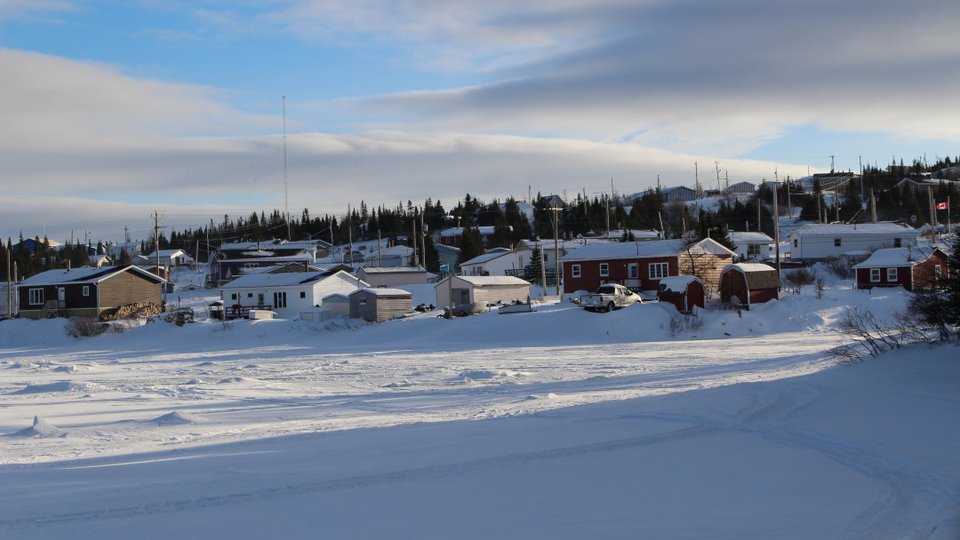
The following is an excerpt from the book, A Long Journey: Residential Schools in Labrador and Newfoundland.
A light snow was falling the day Prime Minister Justin Trudeau flew in to Happy Valley–Goose Bay. It was a Friday morning, 24 November 2017, and Trudeau had come to Labrador to apologize to the former boarding school students of the region. Hundreds of people gathered to hear the prime minister deliver a heartfelt apology on behalf of the Canadian government. His words paid tribute to those students who had suffered harm while at one of the five boarding schools in Labrador and St. Anthony, Newfoundland, after 1949:
To the survivors who experienced the indignity of abuse, neglect, hardship and discrimination by the individuals, institutions and system entrusted with your care, we are truly sorry for what you have endured. We are sorry for the lack of understanding of Indigenous societies and cultures that led to Indigenous children being sent away from their homes, families and communities and placed into residential schools. We are sorry for the misguided belief that Indigenous children could only be properly provided for, cared for, or educated if they were separated from the influence of their families, traditions, and cultures (1).

MacMillan Mission School, Nain, c.1930 (Photo: Them Days Archives)
For the surviving students, the apology was long overdue. Thousands of children had attended the boarding schools run by the Moravian Church and the International Grenfell Association in North West River, Cartwright, Makkovik, Nain, and St. Anthony. But they had been left out of the national apology and reconciliation process begun in 2008 by then Prime Minister Stephen Harper. The government of Canada at the time had argued that it was not accountable for the boarding schools because they had opened before Newfoundland and Labrador had become a part of Canada. In response, hundreds of the former students had launched a class-action suit against the federal government. As Charlotte Wolfrey, an Inuit leader from Rigolet, Labrador, explained:
The truth for us in Labrador has certainly been told over and over and over again, but it has fallen on deaf ears. It pains us, it hurts us, as Labrador people, as Inuit, and as Innu to not be believed. Our truth was not included in the apology or the settlement, and our only recourse is the courts of Canada (2).
The former students wanted the federal government to acknowledge that it had failed in its responsibilities towards Indigenous peoples after Newfoundland and Labrador joined Canada in 1949. They wanted their stories to be heard, and to be recognized as part of the family of Indigenous residential school survivors across Canada. “The policies of the federal government and the decisions that they make continue to fragment and divide our people,” argued Nunatsiavut Finance Minister Danny Pottle in 2011. “We need to be brought into this circle. Labrador Inuit have told the truth. Labrador Inuit want to be believed. Labrador Inuit want to begin the journey of reconciliation. But how can there be truly reconciliation when there are people left out of this process (3)?”
The class-action lawsuit went to court in 2015, and former students had to testify about their experiences — something that no other residential school survivor was forced to do in the other Canadian class-action lawsuits (4). Fortunately, the case was relatively short-lived. In 2016, soon after Trudeau’s Liberal Party came into power, the federal government assumed responsibility for the Newfoundland and Labrador schools.

Schoolgirls fetching water, ca. 1937. (l-r: Silpa Sillitt, Katie Sillitt, Katie Sillitt, Melena Barbour, Mary Sillitt )(Photo: Them Days Archive)
The apology brings the former students in Labrador and northern Newfoundland into the circle of residential school survivors across Canada (5). It acknowledges the similarities in their experiences and in the governance structure that created the schools. Although the Labrador and St. Anthony institutions were not part of the federally operated residential school system, they had much in common.
As this book will show, the Moravian Church and International Grenfell Association staff modified their approach to running the boarding schools over time, but, like residential schools elsewhere, one goal remained constant: to dramatically change and transform the children (6).
In the beginning, the Moravian schools set out to convert children to Christianity. Later, both the Moravian Church and the International Grenfell Association aimed to “civilize” them. Finally, the schools planned to integrate the students into Canadian society and make them into wage-earning citizens.
In all cases, the boarding schools tried to somehow “improve” the children by separating them from the influence of their families and communities. This separation often caused children to lose close connections with their culture, their language, and their family. It also made the children vulnerable to bullying and abuse.

The interior of the new St. Anthony orphanage, after 1923 (Photo: of The Rooms)
The Nunatsiavut Inuit, NunatuKavut Inuit, and Innu students who experienced this “improvement” project are now demanding that we all, as Canadians, re-examine the motives behind the schools. As Shirley Flowers, a former student originally from Rigolet, argues, “The residential school was part of a bigger scheme of colonization. There was intent; the schools were there with the intent to change people, to make them like others and to make them not fit. And today, you know, we have to learn to decolonize (7).”
A new book presents the history of these forgotten boarding schools. A Long Journey: Residential Schools in Labrador and Newfoundland (ISER Books, 2020) describes the establishment of the institutions in the early 1900s, the experiences of students and staff, and the efforts to close them, which were often driven by Indigenous communities intent on improving the educational system. Centred around the stories of the children who attended the boarding schools, the book explores colonial relationships and Indigenous resurgence in the struggle over teaching and caring for Indigenous children.
References:
- Prime Minister Justin Trudeau, “Statement of Apology on Behalf of the Government of Canada to Former Students of the Newfoundland and Labrador Residential Schools, 24 November 2017” (Ottawa: Government of Canada, 2017).
- Charlotte Wolfrey, 27 Oct. 2011, National Centre for Truth and Reconciliation Archives, Sharing Panel (Atlantic National Event): ANE205, Halifax, Truth and Reconciliation Commission of Canada (TRC).
- Danny Pottle, 30 June 2011, National Centre for Truth and Reconciliation Archives, Sharing Panel (Northern National Event): SP150, Inuvik, TRC.
- “Strapped, Bullied, and Sexually Assaulted at Residential School, Ex-Student Testifies,” CBC News, 5 Oct. 2015, https://www.cbc.ca/news/canada/newfoundland-labrador/residential-school-lawsuit-toby-obed-1.3256895
- Ronald Niezen, Truth and Indignation: Canada’s Truth and Reconciliation Commission on Indian Residential Schools, 2nd ed. (Toronto: University of Toronto Press, 2017).
- Truth and Reconciliation Commission of Canada (TRC), Canada’s Residential Schools: The Final Report for the Truth and Reconciliation Commission of Canada (Montreal and Kingston: McGill-Queen’s University Press, 2015).
- Shirley Flowers, 20 Sept. 2011, National Centre for Truth and Reconciliation Archives, Sharing Panel (Goose Bay Hearing): SP025, TRC.





